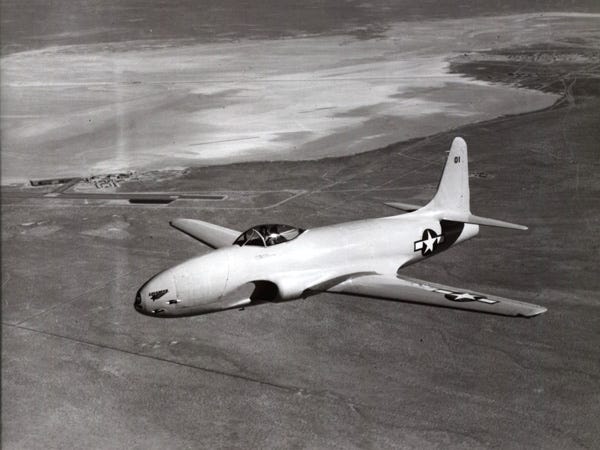Lessons from the Legendary Skunk Works: Innovation Unleashed
Written on
Chapter 1: The Legacy of Skunk Works
The fascinating world of innovation has always intrigued me, especially when examining how various industries approached design before the digital age reshaped everything. This exploration delves into the origins of innovation teams and the enduring lessons they offer.
What Exactly is Skunk Works?
The term "Skunk Works" often refers to small, agile teams granted the freedom to tackle some of the toughest challenges in their fields. This concept emerged during World War II when it became evident that German forces were pioneering revolutionary aircraft powered by jet engines. In June 1943, the US Army Air Force's Air Tactical Service Command collaborated with Lockheed Aircraft Corporation to design a superior aircraft to counter this threat. Aeronautical engineer Clarence "Kelly" Johnson and his team proposed the "XP-80," marking the USA's inaugural jet fighter.
Securing the contract led to the formation of the Skunk Works team, which employed a rapid and clandestine design process, remarkably delivering the aircraft in just 143 days—seven days ahead of schedule. This new methodology laid the groundwork for numerous revolutionary aircraft, such as the SR-71 Blackbird and the F-117 stealth fighter, which transformed aviation through innovative research and development.

Creating cutting-edge technology requires not only scientific precision but also creative problem-solving skills. This balance is particularly vital in aerospace, where designs must withstand extreme physical conditions and constraints.
What Characterizes the Skunk Works Process?
The Skunk Works model can be understood through two key dimensions: the team structure and the methodologies, which remain relevant today thanks to "Kelly’s Rules."
The Team
A small, skilled group forms the foundation of the Skunk Works team, operating in secrecy to prevent espionage or accidental disclosures. For instance, during the XP-80 development, only five out of over 130 personnel were aware of the project's true nature!
These team members are overseen by a manager who possesses significant autonomy and is trusted to maintain progress and direction. This balance between rapid exploration of diverse ideas and focused delivery of results is essential for effective problem-solving.
Independence and Low Overhead
Granting autonomy is crucial. Eliminating bureaucratic obstacles allows for quicker progress, particularly in large organizations where decision-making can be bogged down by numerous stakeholders and a culture of committee reviews.
By empowering small, agile teams to make quick decisions, solutions can be crafted more effectively. The manager keeps key stakeholders informed through progress reports and detailed updates regarding critical decisions.
Velocity
The emphasis on speed and rapid prototyping, rather than exhaustive upfront specifications, facilitates quick iterations and learning. This iterative approach enables teams to dissect problems and develop solutions efficiently, circumventing the pitfalls of "design by committee."
In essence, small, talented teams freed from bureaucratic constraints can execute their visions with remarkable speed.

Examples of Innovation Teams
The success of Skunk Works has inspired various organizations to adopt similar approaches, leading to significant innovations.
Apple’s Industrial Design Group
Under Jony Ive, Apple's secretive design lab played a crucial role in shaping the company's future products. This tight-knit team, comprising around 20 designers, operates independently and conducts regular brainstorming sessions to tackle specific design challenges.

The iPhone, developed in secrecy by nimble teams focused on rapid prototyping, serves as a testament to this methodology.
IBM Research
IBM has a rich history of R&D, having been awarded numerous prestigious accolades and holding a record number of patents. With 12 dedicated labs worldwide, IBM continues to drive technological innovation through rigorous research and development, echoing the Skunk Works spirit.

Ford Motors: Project Petunia
When reimagining the Ford GT40, the ultimate American sports car, Ford’s team operated under a similar "skunkworks" approach, with a small, dedicated group working in secrecy beneath the main Product Development Center. This strategy paid off, as the car won best in class at Le Mans in 2016, built within a remarkable 14-month timeframe.

Chapter 2: Insights for UX & Design
What can we glean from these principles and processes? How might they inform our approach to complex product design challenges today?
Emphasizing Velocity
One of the biggest hurdles teams face is the tendency to pursue perfection, often hindering the learning process. The Skunk Works ethos of "progress over perfection" can inspire teams to adopt rapid learning cycles, emphasizing the importance of iterative design and swift execution.
Rapid Prototyping and Testing
Prototypes serve as invaluable communication tools, effectively visualizing complexity and clarifying ambiguities. Developing a range of prototypes—from simple mock-ups to fully functional models—enables teams to explore ideas efficiently and test concepts before committing extensive resources.

Trust and Empowerment
Building trust within teams is essential for fostering an environment conducive to rapid execution. Maintaining transparency, involving key stakeholders, and empowering teams to make decisions can help eliminate barriers that slow down progress.
In conclusion, while not every situation demands a Skunk Works setup, the principles of small, empowered teams tackling complex challenges through streamlined processes can lead to significant advancements in any organization.

The first video explores the origins and evolution of Skunk Works, detailing its impact on modern design and innovation practices.
The second video presents a historical overview of Skunk Works, showcasing its pivotal role in aerospace advancement and its lasting influence on design methodologies.